Targeted workup after initial febrile urinary tract infection: using a novel machine learning model to identify children most likely to benefit from VCUG
HsinHsiao Wang, MD, MPH, MBAn1, Michael Li, BS2, Dimitri Bertsimas, PhD2, Carlos Estrada, MD, MBA1, Caleb Nelson, MD, MPH1.
1Boston Children's Hospital, Boston, MA, USA, 2MIT, Cambridge, MA, USA.
BACKGROUND: Significant debate persists regarding appropriate imaging work-up of children after an initial febrile UTI. Different than prior version, the 2011 AAP guideline recommended deferring VCUG until after second febrile UTI. Greatly preferable to these “all-or-none” approaches would be a model that can identify children at highest risk for both recurrent UTI and VUR. Such model would allow targeted use of VCUG for high-risk children, while children at low risk could be comfortably observed without VCUG as recommended by the AAP guidelines. We sought to develop a model to predict probability of recurrent UTI and VUR (“rUTI-associated VUR”) among children after initial UTI.
METHODS: We included the RIVUR and CUTIE subjects, excluding the treatment arm (prophylaxis) from RIVUR. Bivariate analyses were performed to compare potential predictors between subjects with rUTI-associated VUR and those without. Missing data was imputed using optimal tree imputation. Data were split into training/validation/testing sets. Selected weights and oversampling methods was applied prior to training the final optimal classification tree (OCT) model. Hyperparameters were tuned by the validation set with 5-fold cross validation. The main outcome was rUTI-associated VUR in the included cohort. Performance of the predictive machine learning model was assessed based on the AUC in testing set.
RESULTS: In total, 305 RIVUR and 195 CUTIE participants were included in the study. Mean age was 21±19 months. Female constituted 90% of the overall cohort. 72 patients developed recurrent UTI while 53 of them was found to have VUR. The final OCT model included age, gender, race, weight, systolic blood pressure percentile, dysuria, urine microalbumin/creatinine ratio, prior antibiotics exposure, and current medication. The OCT model predicted those at high or low risk of rUTI-associated VUR with AUC at 0.761 (95CI: 0.714- 0.808) on the testing set.
CONCLUSIONS: Our predictive model using a novel machine learning algorithm provides promising performance to facilitate individualized management of children with initial UTI, and identify those most likely to benefit from VCUG after the initial UTI. This would allow much more selective use of this test, increasing the yield while also minimizing overutilization. 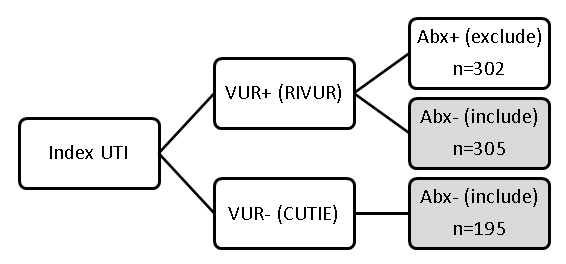
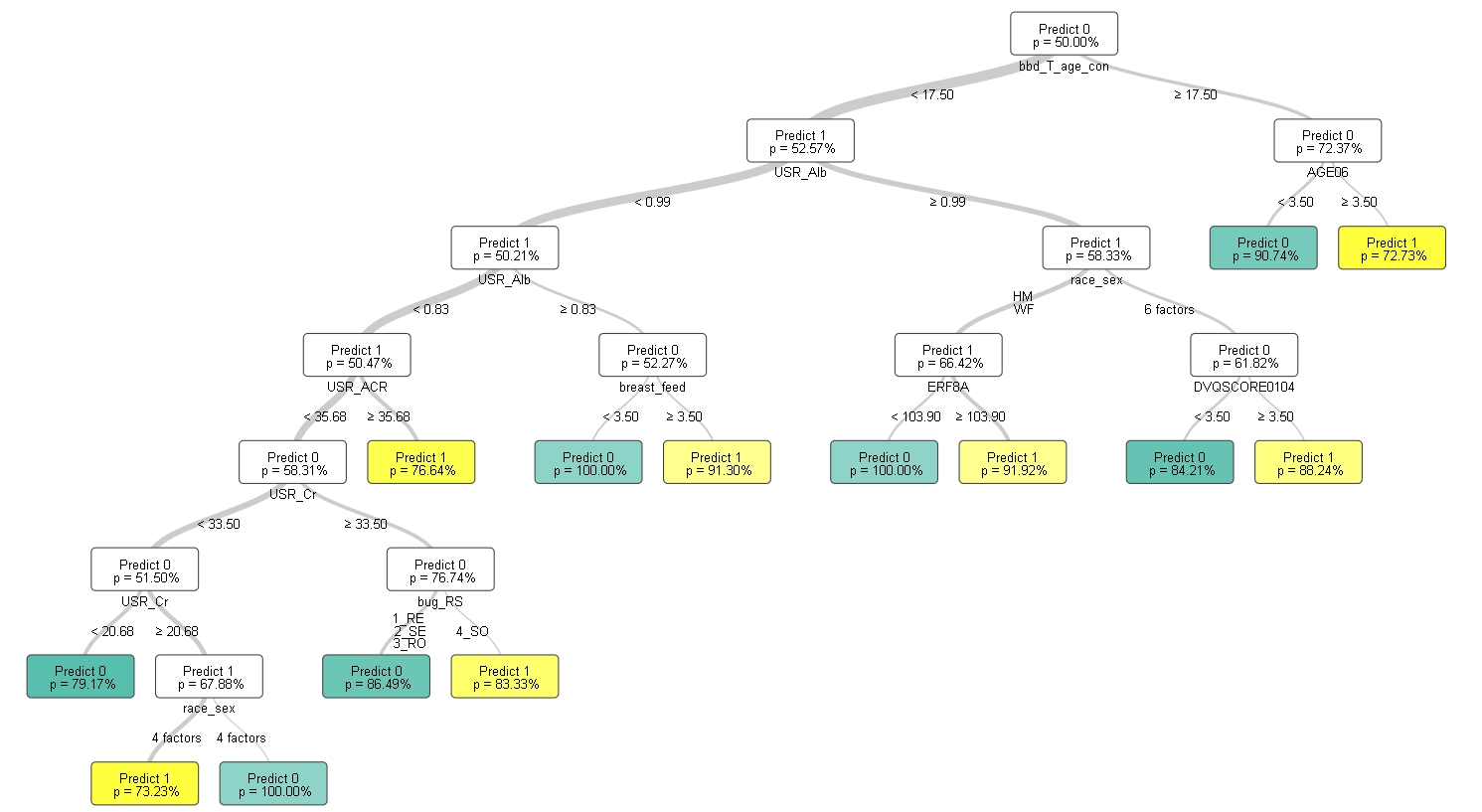
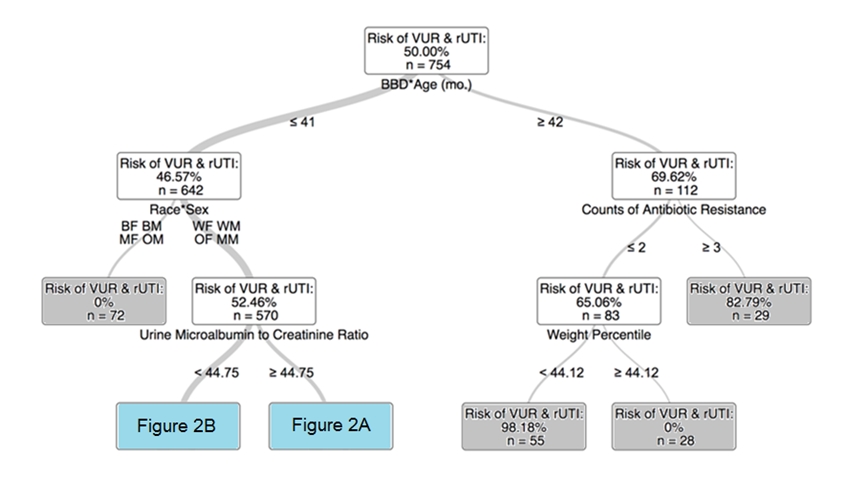
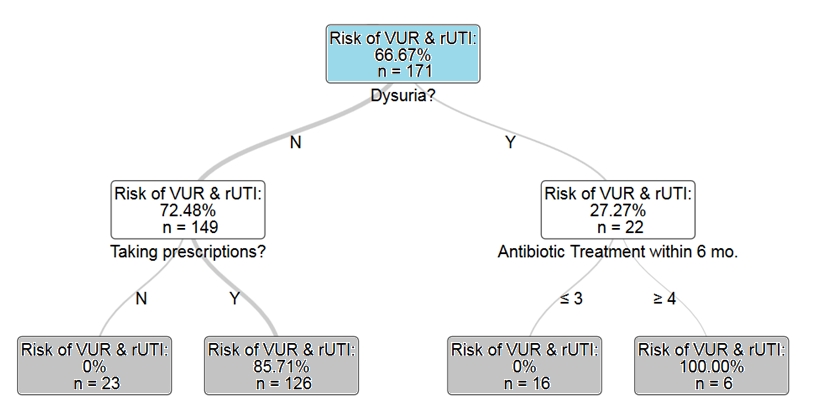
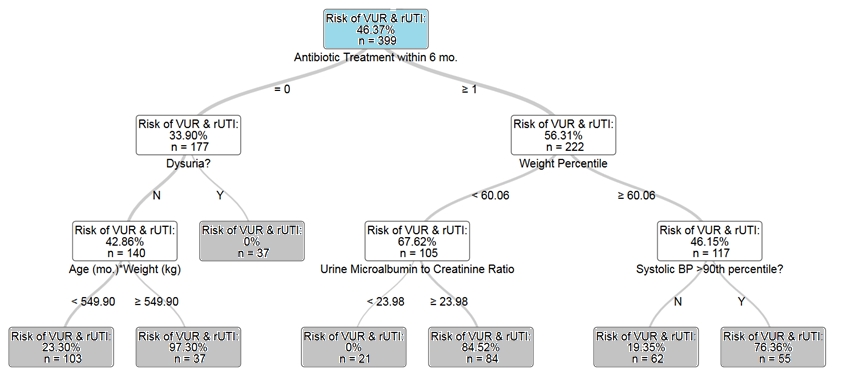
Back to 2018 Program




